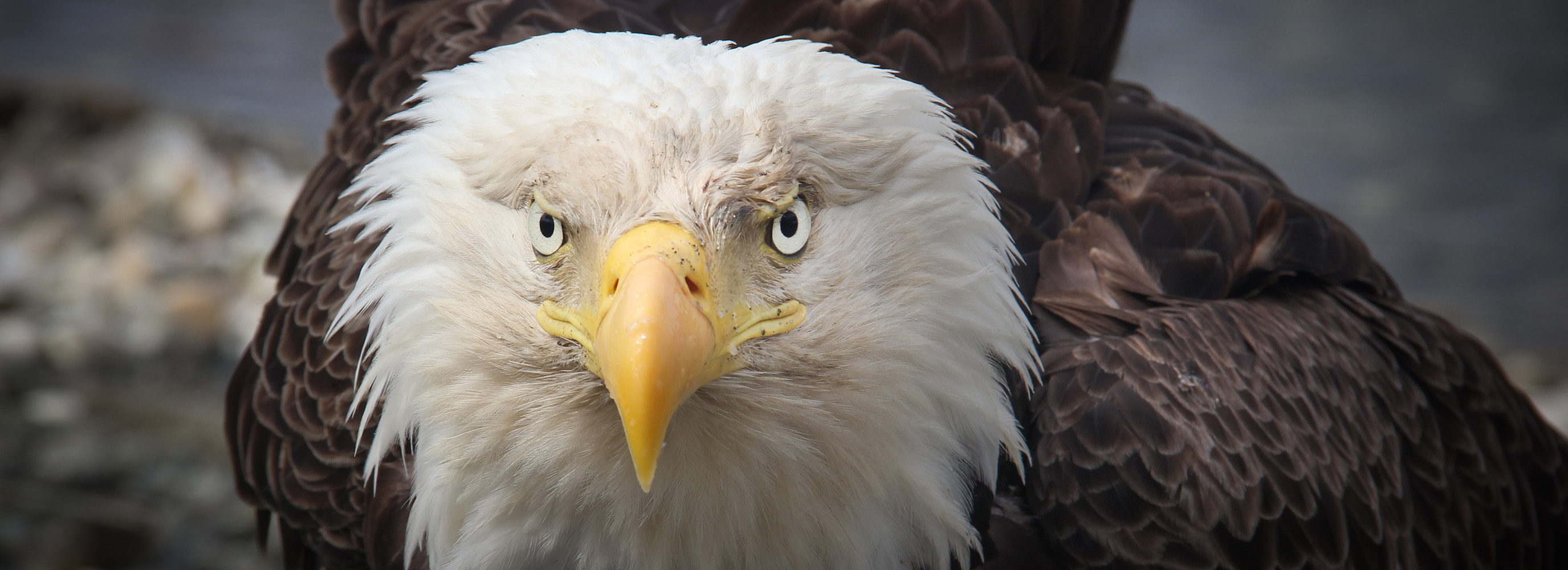Bald Eagle vs. Great Blue Heron
An avian scuffle on Calvert Island turns into an unexpected opportunity.
Wings and feathers whooshed through the air. Rob Nelson—one of the caretakers at the Calvert Island Ecological Observatory during the winter season—had just stepped out onto the porch for breakfast when the morning’s excitement began. Five meters above the ground, the enormous blur of a great blue heron zoomed past, narrowly missing the headquarters’ antenna. Seconds later, a bald eagle chased in hot pursuit with two of the resident ravens following not far behind.
“When I initially went around back to investigate there were only the two ravens up in a tree above the greenhouse,” says Nelson. He’d lost track of the other participants, the eagle and heron. Later, he ventured back out with olfactory reinforcements—namely Reef, his Karelian bear dog companion.

“I took Reef and she led me right there,” says Nelson.
The bones and feathers of a mangled heron lay on the ground. Nelson noticed that another heron—possibly its mate—was circling high in the sky, screaming at full volume with its distinct raspy honk. But its companion had lost its fight to the eagle, which had vanished into the spruce trees.
When an animal dies on Calvert Island, scientists see a learning opportunity. A porpoise skull and other found bones are displayed in the Tula classroom and brought out to show visiting school groups.
Last year, an old male sea otter washed up nearby. Mike de Roos, one of the world’s foremost experts in re-articulating marine mammal skeletons, spent 150 hours putting him back together. The sea otter’s skeleton now hangs prominently in the observatory’s main lodge.
The heron was no exception. One of the members of the Hakai Institute nearshore team—Neha Acharya-Patel—was eager to prep the wings for display. After the eagle and ravens had had their fill, Rob returned to the area and removed the wings, which remained mostly untouched.
“A lot of the coloration was surprising,” says Acharya-Patel. “It is not often you get to see heron wings so closely.”
They used a common method to pin the wings that Acharya-Patel learned in an ornithology class at the University of British Columbia. The whole process can be found online, courtesy of the Beaty Biodiversity Museum.
Neha Acharya-Patel and Ondine Pontier pin a set of wings from a great blue heron. Video by Derek Van Maanen
Bald eagles are known to target great blue heron eggs and chicks. But with their dagger-like bill, adult herons are not usually on the eagles’ menu. There are only a few recorded examples in the scientific literature where bald eagles have targeted an adult heron. And it isn’t like this ill-fated heron was sick or weak.
“The heron seemed very healthy and clearly had some fatty tissue storage for the winter,” says Ondine Pontier, who helped pin the wings.
It’s a bird eat bird world out there. And scientists are there to get educational materials from it.

